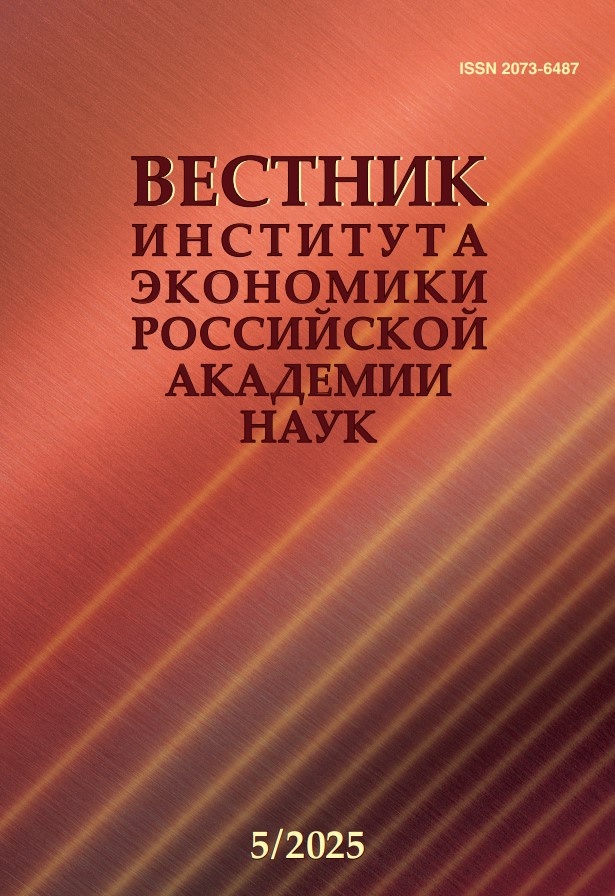Assessment of factors affecting perception of goods packaging by consumers
- Authors: Gutnikova O.N.1, Kalkova N.N.1
-
Affiliations:
- V.I. Vernadsky Crimean Federal University
- Issue: No 5 (2025)
- Pages: 146-166
- Section: Economics and management
- URL: https://journal-vniispk.ru/2073-6487/article/view/352598
- DOI: https://doi.org/10.52180/2073-6487_2025_5_146_166
- EDN: https://elibrary.ru/IHNKDM
- ID: 352598
Cite item
Full Text
Abstract
This article examines various factors influencing consumer product perception and assesses the impact of individual aspects of product information on product packaging. Various brands of fruit juice served as the object of the study. Neuromarketing, specifically eye-tracking technology, was used as the research methodology. The paper characterizes the requirements of national standards of the Russian Federation regarding the rules for applying product information. An attempt was made to determine the level of influence of cognitive dissonance in the buyer, which occurs when focusing on the name printed on the product packaging with incorrectly placed hyphens, as well as to determine the degree to which this marketing ploy triggers a desire to make a purchase or the formation of negative perceptions. The neuromarketing study did not reveal a positive effect of intentional spelling errors in the product name on the formation of consumer interest. Oculographic analysis confirmed that incorrect hyphens in names have an insignificant impact on product perception. It was found that the key factors in attracting attention are the area of the name placement and its cognitive accessibility due to brand recognition, while minor typographic errors are offset by the integrity of perception and top-down processing of visual information, as well as the location of the product on the shelf.
About the authors
Olga N. Gutnikova
V.I. Vernadsky Crimean Federal University
Email: vechirko15@mail.ru
Cand. Sci. (Econ.), Associate Professor of the Department of Marketing, Trade and Customs Aff airs, Institute of Economics and Management
Russian Federation, SimferopolNatalia N. Kalkova
V.I. Vernadsky Crimean Federal University
Author for correspondence.
Email: nkalkova@yandex.ru
Cand. Sci. (Econ.), Associate Professor of the Department of Marketing, Trade and Customs Aff airs, Institute of Economics and Management
Russian Federation, SimferopolReferences
- Anderson J.R. The architecture of cognition. Harvard University Press, 1983.
- Zhalolov Sh.U. Grammatical norms of the use of words, phrases and sentences in the modern Russian language // Economy and Society. 2021. No. 11 (90). Pр. 995–998. (In Russ.).
- Plassmann H., O’Doherty J., Shiv B., & Rangel A. Marketing actions can modulate neural representations of experienced utility // Proceedings of the National Academy of Sciences. 2008. Vol. 105 (3). Рр. 1050–1054. doi: 10.1073/pnas.0706929105.
- Aaker D.A. Creating Strong Brands/ Translated from English by S.A. Starov. M.: ID Grebennikov, 2003. (In Russ.).
- Stepantsova A.F. Research of product packaging in terms of its perception by potential and actual consumers (on the example of TM “Svitlogorye”) // In the collection: Development of science and practice in a globally changing world under risk conditions. collection of materials of the XXIII International scientific and practical conference. Moscow. 2023. Pр. 555–561. (In Russ.).
- Zherlitsyn O.M. Neuromarketing study of the attractiveness of packaging branding // Marketing and marketing research. 2024. No. 3. Pр. 176–182. (In Russ.).
- Losevskaya E.N. Neuromarketing as a tool for increasing the visibility of brand information in advertising and on packaging // Brand management. 2021. No. 3. Pр. 214–220. (In Russ.).
- Visual neuromarketing: fundamental and applied research / edited by O.B. Yarosh, V.E. Reutov. Simferopol: IT “ARIAL”, 2020. (In Russ.).
- Keller K.L. Strategic brand management: Building, measuring, and managing brand equity. Pearson Education, 2013.
- Alter A.L., Oppenheimer D.M. Uniting the tribes of fluency to form a metacognitive nation // Personality and Social Psychology Review. 2009. Vol. 13 (3). Рp. 219–235. doi: 10.1177/1088868309341564.
- Kahneman D. Thinking, fast and slow. New York: Farrar, Straus and Giroux, 2011.
- Duchowski A. Eye-Tracking Methodology. Theory and Practice. (Second Edition). Springer-Verlag London Limited, 2007.
- Information asymmetry [Electronic resource]: methods and algorithms of neuromarketing / O.B. Yarosh, N.N. Kalkova, E.A. Mitina. Simferopol: IT «ARIAL», 2023. (In Russ.).
- Kalkova N.N. Neurobranding Research: Ethical Issues // Scientific Bulletin: Finance, Banks, Investments. 2022. No. 4. Pр. 100–113. (In Russ.).
- Kerzina E.A. Neuromarketing: Methodological Foundations and Practical Applications in Business // Marketing in Russia and Abroad. 2019. No. 3. Pр. 13–18. (In Russ.).
- Treisman A.M. Gelade G. A feature-integration theory of attention // Cognitive Psychology. 1980. Vol. 12 (1). Рp. 97–136. doi: 10.1016/0010-0285(80)90005-5.
- Faggi L. et al. Loca l propagation of visual stimuli in focus of attention // Neurocomputing. 2023. Vol. 560. Article 126775. Рp. 1–18. doi: 10.1016/j.neucom.2023.126775.
- Roelfsema P.R., Houtkamp R. Incremental grouping of image elements in vision // Attention, Perception, & Psychophysics. 2011. Vol. 73. Рp. 2542–2572. doi: 10.3758/s13414-011-0200-0.
- Wagemans J. et al. A century of Gestalt psychology in visual perception: Perceptual grouping and figure-ground organization // Psychological Bulletin. 2012. Vol. 138 (6). Рp. 1172–1217. doi: 10.1037/a0029333.
- Katsuki F., Constantinidis C. Bottom-Up and Top-Down Attention: Different Processes and Overlapping Neural Systems // The Neuroscientist. 2013. Vol. 20 (5). Рp. 509–521. doi: 10.1177/107385841351413.
- Krishna A. An integrative re view of sensory marketing: Engaging the senses to affect perception, judgment and behavior // Journal of Consumer Psychology. 2012. Vol. 22 (3). Рр. 332–351. doi: 10.1016/j.jcps.2011.08.003.
- Itti L., Koch C. A sali ency-based search mechanism for overt and covert shifts of visual attention // Vision Research. 2000. Vol. 40 (10–12). Рp. 1489–1506. doi: 10.1016/S0042-6989(99)00163-7.
Supplementary files







